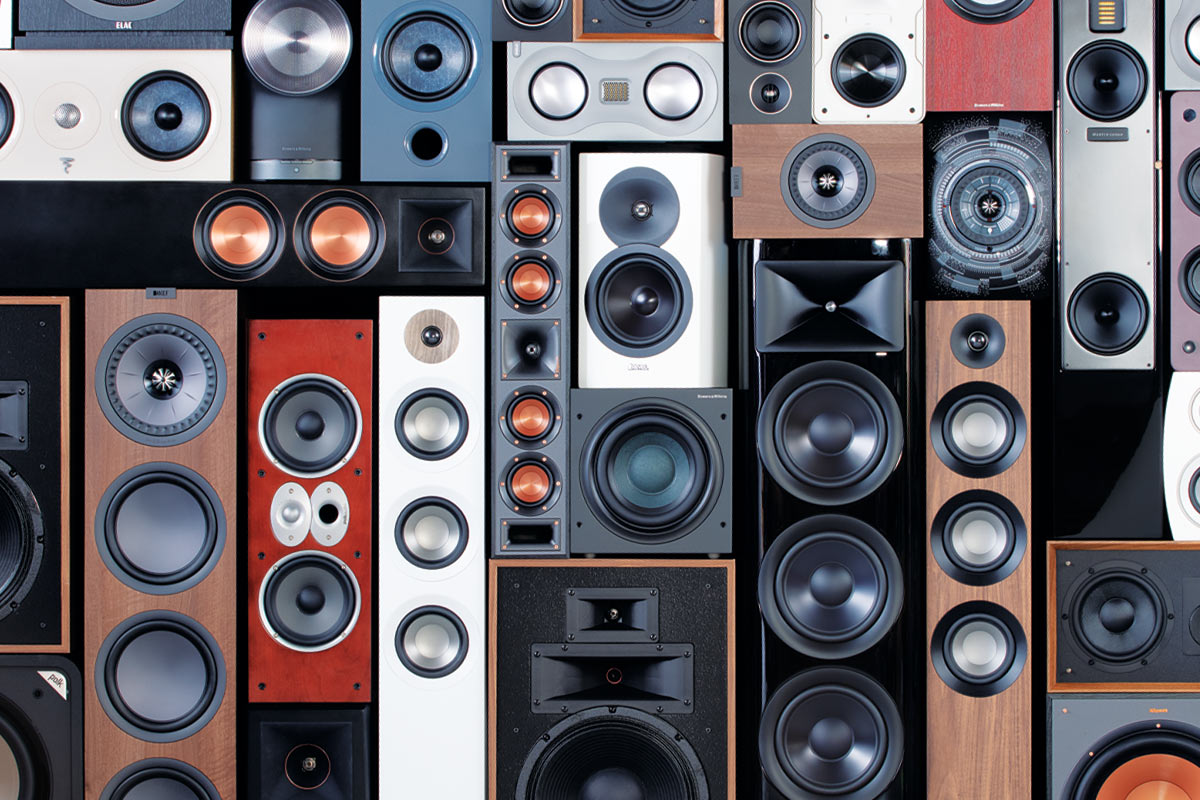
Welcome to the world of audio evolution! From the humble beginnings of the first electromagnetic speaker in 1874 to the wireless wonders of today, the history of audio speakers is a fascinating journey marked by innovation, breakthroughs, and moments that shaped the way we experience sound. In this exploration, we delve into 25 historical facts and numerical trivia about audio speakers, unveiling the key figures, milestones, and technological advancements that have defined the evolution of this essential component of our audio landscape. Join us as we unravel the stories behind the invention of the first speaker, the rise of high-fidelity, the advent of portable audio, and much more. Whether you’re an audiophile, a tech enthusiast, or simply curious about the world of sound, this journey promises to be a captivating blend of history, technology, and the ever-expanding realm of audio innovation.
Invention of the First Speaker: In 1874, German engineer Ernst Siemens made a groundbreaking contribution to audio technology by inventing the first electromagnetic speaker. This marked the initial step toward the development of modern loudspeakers. Siemens’ creation laid the foundation for the transformative role that speakers would play in various industries, from audio reproduction to telecommunications.
First Commercial Speaker: The Magnavox, introduced in 1921 by Danish engineer Peter L. Jensen and his partner Edwin Pridham, represented the first commercially available loudspeaker. This marked a pivotal moment, as it allowed the public to experience amplified sound for the first time. The Magnavox set the stage for the widespread adoption of audio speakers in homes, theaters, and public spaces.
Dynamic Speaker Patent: In 1925, Edward W. Kellogg and Chester W. Rice obtained a patent for the dynamic speaker, a significant advancement in speaker technology. This design featured a moving-coil element that became a standard in speaker construction. The dynamic speaker’s versatility and efficiency contributed to its widespread use in a variety of applications, from early radio broadcasts to emerging forms of entertainment.
Frequency Range Development: Bell Labs’ work in the 1930s played a crucial role in expanding the frequency range of speakers. This breakthrough allowed for more accurate reproduction of sound across a wide spectrum, improving the overall audio fidelity. The pursuit of a broader frequency response became a hallmark of speaker development, shaping the way we experience music, movies, and other forms of entertainment.
First Full-Range Speaker: In 1937, RCA achieved a milestone by introducing the first full-range speaker capable of reproducing the entire audible frequency spectrum. This innovation addressed the limitations of previous designs, offering a more comprehensive audio experience. The advent of full-range speakers paved the way for the high-fidelity era, where listeners could enjoy a more faithful reproduction of recorded sound.
High-Fidelity Era: The 1950s witnessed the dawn of the high-fidelity era, characterized by a pursuit of audio accuracy and realism. This period saw the development of speakers specifically designed to deliver high-fidelity sound reproduction. These advancements laid the groundwork for the audiophile culture, influencing the design and production of speakers for decades to come.
Quadraphonic Sound: The 1970s marked a period of experimentation with spatial audio experiences, leading to the popularity of quadraphonic sound systems. These systems utilized four speakers to create a more immersive audio environment. While quadraphonic sound had its challenges in terms of standardization, it paved the way for future developments in surround sound technology.
First Surround Sound System: Dolby Laboratories’ introduction of Dolby Stereo in 1975 marked a milestone in surround sound technology. This system, initially designed for the film industry, provided a multi-channel audio experience that enhanced the immersion of moviegoers. Dolby’s influence extended beyond cinemas, eventually shaping the landscape of home theater audio.
THX Certification: George Lucas founded THX in 1983 with the goal of ensuring high-quality audio and visual reproduction in movie theaters. The THX certification program set industry standards for sound system performance, contributing to the creation of optimal viewing and listening environments. The THX logo became synonymous with premium audio quality in cinemas around the world.
First Portable Speaker: Sony’s introduction of the “Freestyle” in 1984 revolutionized audio consumption by making speakers portable. This compact and portable speaker allowed individuals to enjoy music on the go, paving the way for the portable audio revolution. Sony’s innovation marked a shift in how people interacted with music, enabling them to bring their favorite tunes wherever they went.
Introduction of the Subwoofer: In 1974, Ken Kreisel introduced the first commercial subwoofer, a specialized speaker designed to reproduce low-frequency sounds. The addition of subwoofers to audio systems significantly enhanced the depth and impact of bass frequencies. This innovation became especially important in audio systems used for music and home theater, where the reproduction of deep, resonant tones is crucial for a more immersive listening experience.
World’s Largest Speaker: China’s Nanjing Qidi Technology Co., Ltd., holds the Guinness World Record for creating the world’s largest speaker cone with a staggering diameter of 20 meters (65.6 feet). This colossal speaker represents an engineering marvel and serves as a testament to the continuous pursuit of pushing the boundaries of audio technology.
Smallest Commercial Speaker: The “Bitty” speaker, measuring just 1 inch in diameter, stands out as one of the smallest commercially available speakers. Despite its diminutive size, advancements in micro-speaker technology have allowed the “Bitty” and similar miniature speakers to find applications in various compact electronic devices, showcasing the versatility of modern audio technology.
Largest Speaker Manufacturer: As of my last knowledge update in 2022, Harman International is recognized as one of the largest audio equipment manufacturers globally. Renowned for its brands such as JBL and Harman Kardon, Harman International has played a pivotal role in shaping the audio industry, producing a diverse range of speakers and audio solutions.
Highest-Priced Commercial Speaker: The Wisdom Audio Infinite Wisdom Grande holds the distinction of being one of the most expensive commercially available speakers, priced at over $700,000 per pair. This high-end speaker caters to audiophiles and enthusiasts seeking uncompromising audio quality, incorporating premium materials and cutting-edge technology for an unparalleled listening experience.
Decibel Levels: The live music experience, particularly at rock concerts, can reach sound levels exceeding 120 decibels. Understanding decibel levels is crucial, as prolonged exposure to sounds above 85 decibels can lead to hearing damage. This knowledge has influenced the design of speakers and audio systems to prioritize both power and clarity, ensuring safe and enjoyable listening experiences.
Speaker Efficiency: Speaker efficiency, measured in decibels (dB) of sound pressure level produced per watt of input power, is a critical parameter in speaker design. Higher efficiency speakers require less power to produce the same volume, contributing to energy-efficient audio systems and influencing the selection of speakers for various applications.
Speaker Impedance: The impedance of speakers, typically measured in ohms, plays a crucial role in matching speakers with amplifiers for optimal performance. Common speaker impedances include 4, 6, and 8 ohms. Understanding and properly matching impedance is essential in ensuring compatibility and preventing issues such as overheating or damage to audio equipment.
Speaker Materials: The materials used in speaker construction, including cone materials such as paper, plastic, metal, or composites, significantly impact the speaker’s sound characteristics. Engineers carefully choose materials based on their acoustic properties to achieve desired tonal qualities and overall speaker performance.
Wireless Speaker Adoption: As of 2022, the global market for wireless speakers has experienced rapid growth, with millions of units sold annually. The adoption of wireless technology has liberated speakers from traditional wired constraints, offering consumers greater flexibility and convenience in setting up audio systems. This shift reflects changing consumer preferences and the ongoing evolution of audio technology.
Voice Coil Technology: Voice coil technology has played a pivotal role in the precision and reliability of speakers. The voice coil is an electromagnetic coil that interacts with the speaker’s magnetic field, causing the diaphragm to move and produce sound. This innovation allows for greater control over diaphragm movement, resulting in improved accuracy and responsiveness in sound reproduction. Voice coil advancements have contributed significantly to the overall performance and efficiency of modern speakers.
Bluetooth Speakers: The introduction of Bluetooth speakers in 1999 with the Jabra JSB-1000 marked a transformative moment in audio technology. These wireless speakers eliminated the need for physical connections, providing users with the freedom to stream audio from compatible devices such as smartphones and tablets. The convenience of Bluetooth technology revolutionized the way people listen to music, fostering a new era of portable and wireless audio solutions.
Surround Sound in Home Theater: Dolby Digital, introduced in 1992, brought surround sound technology to home theaters. This audio encoding format allowed for multi-channel audio playback, enhancing the cinematic experience within the home environment. Dolby Digital became a standard in home theater systems, contributing to the widespread adoption of surround sound for movies, television, and gaming.
Bose Wave System: In 1984, Bose introduced the Wave Music System, a compact and elegantly designed audio system that gained popularity for its high-quality sound. The Wave System utilized advanced acoustic technology to deliver room-filling sound from a compact form factor. Bose’s commitment to innovation and audio excellence made the Wave System a benchmark in premium audio systems.
First Digital Speakers: The early 2000s saw the emergence of digital speakers, incorporating digital signal processing (DSP) technology. Digital speakers offered advanced signal manipulation, allowing for precise control over audio parameters. This technology paved the way for improved sound customization and the integration of digital audio sources, marking a significant evolution in speaker design and functionality. Digital speakers continue to be influential in shaping the landscape of modern audio systems.
Speaker FAQs: Unveiling the World of Audio
Speakers play a crucial role in our daily lives, transforming electrical signals into the sounds we hear. Whether you’re enjoying music, watching movies, or attending a presentation, speakers are the bridge between electronic devices and our auditory experience. Here are some commonly asked questions to shed light on the fascinating world of speakers:
1. What are the different types of speakers?
The speaker universe is vast, with various types catering to specific needs and applications. Here are some of the most common:
- Subwoofers: These speakers reproduce low-frequency sounds (bass) and are often paired with other speakers for a complete audio experience.
- Bookshelf speakers: Compact and versatile, these speakers are ideal for smaller spaces or near-field listening (sitting close to the speaker).
- Floor-standing speakers: Larger and more powerful, floor-standing speakers offer superior sound quality and bass response.
- Center channel speakers: Designed for clear dialogue reproduction, center channels are crucial for home theater setups.
- Surround sound speakers: These speakers create an immersive audio experience by placing sound all around the listener.
- Wireless speakers: Offering convenience and portability, wireless speakers connect to devices via Bluetooth or Wi-Fi.
- Computer speakers: Designed to enhance the audio of your computer, these speakers come in various sizes and configurations.
- Smart speakers: These internet-connected speakers integrate with virtual assistants like Google Assistant or Amazon Alexa, allowing for voice control and smart home integration.
2. What are the key factors to consider when choosing speakers?
Choosing the right speaker depends on your specific needs and preferences. Here are some crucial factors to consider:
- Speaker type: Determine what type of speaker best suits your needs (subwoofer, bookshelf, etc.).
- Size and placement: Consider the size of your listening space and where you’ll be placing the speakers.
- Sound quality: Think about your desired level of audio fidelity – richer bass, clear vocals, etc.
- Power handling: Make sure the speakers can handle the power output of your amplifier or receiver.
- Connectivity: Choose wired or wireless speakers based on your setup and convenience preference.
- Budget: Speakers come in a wide range of prices. Set a budget and look for options that offer good value for your money.
3. What’s the difference between active and passive speakers?
- Active speakers: These speakers have a built-in amplifier, making them self-powered. They connect directly to your audio source (phone, computer, etc.).
- Passive speakers: These speakers require a separate amplifier or receiver to function as they don’t have built-in amplification.
4. How can I improve the sound quality of my speakers?
Here are some tips to enhance your speaker’s sound performance:
- Speaker placement: Positioning your speakers correctly in the room can significantly improve sound quality. Experiment with placement for optimal results.
- Room acoustics: Consider the acoustics of your listening space. Soundproofing materials or diffusers can help control unwanted echoes and reflections.
- Speaker calibration: Some audio systems have calibration tools to optimize the sound for your specific room.
- Upgrade your audio source: The quality of your music or audio files also plays a role. Consider using lossless audio formats or high-fidelity streaming services.
5. How do I care for my speakers?
Proper care extends the life and performance of your speakers. Here are some basic tips:
- Keep them clean: Dust the speaker cabinets with a dry microfiber cloth.
- Avoid excessive heat and humidity: Extreme temperatures and moisture can damage speakers.
- Don’t overload them: Playing music at excessively loud volumes can damage the speaker drivers.
- Protect them from physical damage: Avoid touching the speaker cones and keep them away from pets and children who might accidentally damage them.
6. Where can I learn more about speakers?
Numerous online resources and audiophile communities offer in-depth information on speakers, sound systems, and audio technology. Manufacturer websites and speaker reviews can also be helpful in making informed purchasing decisions.
With this comprehensive FAQ, you’re well on your way to choosing the perfect speakers and elevating your audio experience!









